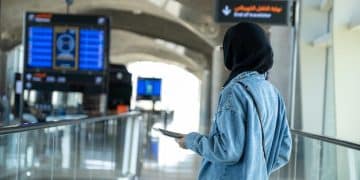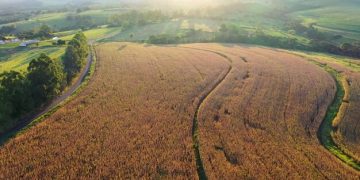How US Government Regulates Drones: A Deep Dive into Federal Policy
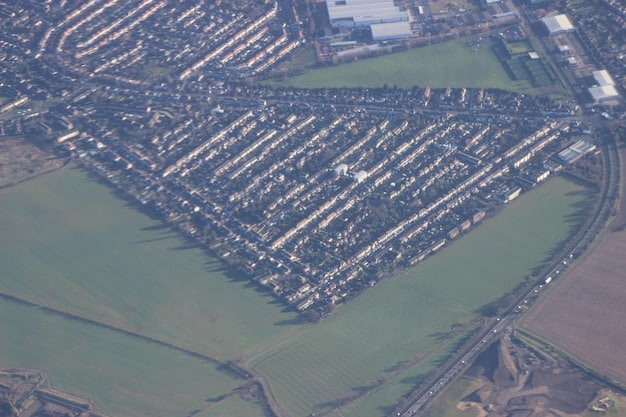
The US government regulates drones primarily through the Federal Aviation Administration (FAA), establishing comprehensive rules for recreational and commercial operations to ensure airspace safety, security, and privacy across various sectors.
The proliferation of Unmanned Aircraft Systems, more commonly known as drones, has transformed various industries, from agriculture and logistics to media and public safety. However, with this rapid technological advancement comes a critical question: How is the US government regulating the use of drones? This inquiry delves into a complex web of rules, agencies, and ongoing debates designed to balance innovation with public safety, security, and privacy concerns in US airspace.
The Federal Aviation Administration (FAA) as the Primary Regulator
The Federal Aviation Administration (FAA) stands at the forefront of drone regulation in the United States. Its mandate is to ensure the safety and efficiency of the national airspace, a responsibility that extends naturally to drone operations. The FAA categorizes drones into various classes—recreational, commercial, and public—each with distinct regulatory frameworks designed to address their unique operational risks and purposes.
The agency’s approach has evolved significantly in response to the rapid pace of drone technology. Initially, regulations were somewhat ad hoc, but as drones became more ubiquitous, the need for a comprehensive and clearly defined set of rules became paramount. This shift led to the development of key regulations that govern nearly all aspects of drone flight within US borders.
Part 107: Commercial Drone Operations
Central to commercial drone regulation is Part 107 of the Federal Aviation Regulations, officially known as “Small Unmanned Aircraft Systems.” This rule, enacted in 2016, created a clear, legally binding framework for most commercial drone activities. It stipulates requirements for pilots, aircraft, and operations.
- Remote Pilot Certificate: Individuals operating drones commercially must obtain a Remote Pilot Certificate with a Small UAS Rating. This requires passing an aeronautical knowledge test covering topics like airspace classifications, weather, and regulations.
- Operational Limitations: Part 107 imposes several operational restrictions, including flying only during daylight or civil twilight (with anti-collision lighting), maintaining visual line of sight (VLOS), a maximum altitude of 400 feet above ground level (AGL), and specific rules regarding flight over people, moving vehicles, and controlled airspace. These limitations are crucial for preventing mid-air collisions and ensuring public safety.
- Waivers: The FAA recognizes that certain operations might require deviations from Part 107 rules. It provides a waiver process for pilots who can demonstrate that their proposed operation can be conducted safely even while deviating from a specific regulation, such as flying at night or beyond visual line of sight (BVLOS).
The introduction of Part 107 was a landmark moment, providing much-needed clarity for businesses eager to leverage drone technology. It fostered a legal and predictable environment, spurring innovation and investment in sectors ranging from real estate and construction to agriculture and infrastructure inspection. This regulatory clarity has been essential for integrating drones into commercial workflows, demonstrating the FAA’s adaptive strategy to new aerial technologies.
Recreational Drone Use: Balancing Freedom and Safety
While commercial operations are governed by Part 107, recreational drone use falls under a different set of guidelines, primarily found in Section 349 of the FAA Reauthorization Act of 2018 (codified as 49 U.S.C. § 44809). The FAA aims to strike a balance between allowing hobbyists to enjoy their drones and maintaining the safety of the national airspace, recognizing that even recreational drones can pose risks if operated irresponsibly.
Recreational flyers are generally subject to less stringent requirements than commercial operators, but they are by no means unregulated. The FAA emphasizes a strong culture of safety and responsibility among recreational users, often through educational campaigns and simple, easy-to-understand rules.
Key Rules for Recreational Flyers
- Registration: All recreational drones weighing 0.55 pounds (250 grams) or more must be registered with the FAA. This provides accountability and helps authorities identify owners in case of incidents. Each registered drone receives a unique identification number.
- TRUST Test: Recreational flyers are required to pass “The Recreational UAS Safety Test” (TRUST). This online, self-paced test covers basic safety knowledge and regulations, ensuring that hobbyists understand their responsibilities before taking flight. It’s a foundational step towards responsible drone operation.
- Operating in Controlled Airspace with LAANC: Flying in controlled airspace (around airports) requires authorization. Recreational flyers can obtain near real-time authorizations through the Low Altitude Authorization and Notification Capability (LAANC) system, which provides instant access to airspace maps and approval status.
- Advisory Circulars and Guidelines: Beyond statutory requirements, the FAA issues advisory circulars and publishes guidelines encouraging best practices for recreational flyers, such as avoiding emergency response areas and respecting privacy.
The distinction between recreational and commercial use can sometimes be blurry, particularly when hobbyists share drone footage online. The FAA typically defines commercial use as any flight conducted for compensation or hire, or in furtherance of a business. This clear delineation helps operators understand which set of regulations applies to their specific drone activity, ensuring compliance and safety within the airspace. The framework for recreational flight aims to be accessible while still upholding a baseline level of safety awareness.
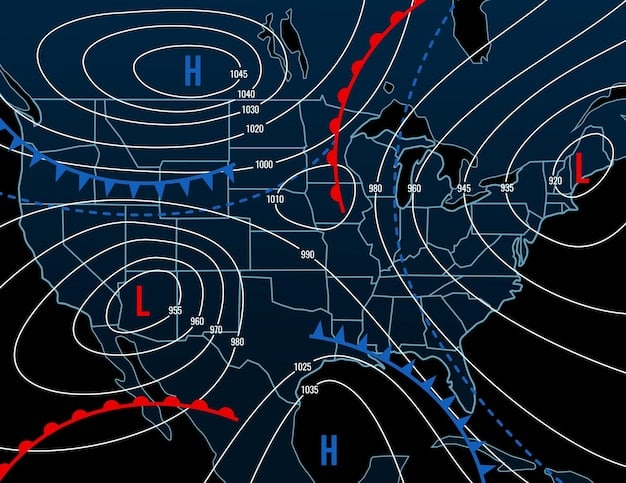
Airspace Restrictions and Authorization Systems
A critical component of US drone regulation involves managing access to the national airspace, particularly around airports and other sensitive locations. The FAA has implemented sophisticated systems to ensure drones do not interfere with manned aircraft or pose security threats. These systems are designed to provide both clarity for drone operators and essential layers of protection for critical infrastructure and air traffic.
The agency’s approach to airspace management is dynamic, adapting to the evolving landscape of drone technology and its potential impacts. This forward-looking strategy is vital for preventing accidents, maintaining operational efficiency, and addressing national security concerns effectively.
LAANC: Streamlining Airspace Access
The Low Altitude Authorization and Notification Capability (LAANC) has revolutionized access to controlled airspace for both recreational and commercial drone operators. LAANC provides near real-time processing of airspace authorization requests for flights within the controlled airspace of many airports. Before LAANC, obtaining authorization could take days or weeks, creating significant operational bottlenecks.
- Instant Authorization: LAANC enables instant and automated approval for operations at or below the FAA-approved UAS Facility Map (UASFM) altitudes. This speed and efficiency are game-changers for time-sensitive operations.
- Airspace Awareness: The system integrates with various third-party apps, providing drone operators with up-to-date airspace maps and restrictions, allowing them to plan their flights safely and legally.
- Reduced Burden: By automating a previously manual process, LAANC significantly reduces the administrative burden on both the FAA and drone operators, fostering greater compliance and promoting safe integration into the national airspace system.
The implementation of LAANC represents a significant step forward in making drone operations more accessible while maintaining a high level of safety and control. It highlights the FAA’s commitment to leveraging technology to solve regulatory challenges and accelerate the adoption of drones across various industries.
Addressing Security, Privacy, and Public Acceptability
Beyond airspace safety, the US government grappling with the broader implications of drone technology, particularly concerning security, privacy, and public perception. The ubiquitous nature of drones raises unique challenges that extend beyond the FAA’s traditional remit, requiring a multi-agency approach involving law enforcement, national security, and legislative bodies.
The balance here is delicate: fostering innovation while protecting citizens’ rights and national interests. This ongoing discussion underscores the evolving nature of drone policy in the US, as new technologies emerge and public concerns shift. The government continually evaluates and refines its strategies to manage these complex issues.
Counter-Drone Technologies and Restrictions
The rise of unauthorized or malicious drone use has prompted the development and deployment of counter-drone technologies. Federal agencies, including the Department of Homeland Security (DHS), the Department of Justice (DOJ), and the Department of Defense (DOD), are authorized to detect, track, and mitigate threats posed by drones in certain sensitive locations.
- Restricted Areas: Flights over critical infrastructure, military installations, and certain national landmarks are strictly prohibited. These restrictions are put in place to prevent potential espionage, terrorism, or disruption of key operations.
- Legislation for Mitigation: Congress has passed legislation, such as the Preventing Emerging Threats Act of 2018, granting federal agencies authority to interdict, disrupt, or seize drones that pose a national security threat. This includes the use of jamming technologies or other means to neutralize rogue drones.
- Privacy Concerns: While the FAA doesn’t directly regulate privacy, state and local governments are increasingly enacting laws to address drone surveillance. The federal government acknowledges these concerns and encourages responsible drone use that respects individual privacy.
The development of counter-drone measures and privacy guidelines is an evolving field, reflecting the dynamic threats and societal impacts associated with drone technology. These efforts highlight a broader governmental recognition of the need for a holistic approach to drone governance that extends beyond mere flight safety to encompass a wider array of societal and security considerations.
Emerging Technologies and Future Regulations
The drone industry is characterized by rapid innovation, with new technologies and applications constantly emerging. This presents an ongoing challenge for regulators, who must develop frameworks that are flexible enough to accommodate future advancements without compromising safety or security. The FAA and other agencies are actively engaged in exploring regulations for beyond visual line of sight (BVLOS) operations, drone delivery services, and Urban Air Mobility (UAM).
These emerging areas promise to unlock significant economic and societal benefits but also introduce new complexities and risks that require careful consideration. The government’s proactive engagement in these areas demonstrates a commitment to facilitating responsible growth within the drone sector while mitigating potential harms.
BVLOS Operations and Drone Delivery
Beyond Visual Line of Sight (BVLOS) operations—where the drone pilot cannot see the aircraft with their own eyes—are crucial for widespread drone applications, such as long-range inspections, infrastructure monitoring, and ubiquitous package delivery. The FAA is actively working with industry stakeholders to develop a framework for safe BVLOS operations, which currently require waivers that are notoriously difficult to obtain.
- Sense and Avoid Technology: A key enabler for BVLOS will be advanced sense and avoid technologies, allowing drones to detect and autonomously maneuver around other aircraft and obstacles. This technology is vital for preventing mid-air collisions.
- Air Traffic Management for Drones (UTM): The concept of an Unmanned Aircraft System Traffic Management (UTM) system is being developed to manage drone traffic at low altitudes, similar to how air traffic control manages manned aircraft. UTM would provide services like airspace design, traffic information, and conflict resolution.
- Drone Delivery Progress: Companies like Amazon, Wing, and Walmart are conducting trials and expanding drone delivery services under specific FAA authorizations. These operations provide valuable data that informs future regulatory development.
The progressive development of BVLOS and UTM frameworks will be instrumental in scaling up drone operations and integrating them more deeply into the national economy. This forward momentum indicates the US government’s dedication to maintaining its position at the forefront of aviation innovation, setting global standards for drone integration and deployment.
The Role of State and Local Governments
While the FAA holds primary authority over national airspace, state and local governments also play a significant (though limited) role in regulating drone use. Their authority typically extends to matters of law enforcement, privacy, land use, and nuisance. This multi-layered regulatory environment can sometimes create complexity for drone operators, necessitating a clear understanding of both federal and sub-federal rules.
The interaction between federal and local regulations is a subject of ongoing debate, particularly concerning preemption—the legal principle that federal law can override state and local laws. However, there are specific areas where local governments retain legitimate regulatory authority that complements, rather than conflicts with, federal aviation law.
Areas of Local Jurisdiction
- Law Enforcement and Nuisance: Local law enforcement agencies can enforce existing laws related to trespassing, harassment, or reckless endangerment, even when a drone is involved. For example, using a drone to harass someone could be prosecuted under state nuisance laws.
- Privacy: Some states and municipalities have enacted laws specifically addressing drone-related privacy concerns, such as prohibiting the use of drones to photograph or record individuals on private property without consent. These laws often fill gaps not explicitly covered by federal aviation regulations.
- Land Use and Property Rights: Local governments may regulate drone takeoffs and landings from public property (e.g., parks or municipal buildings) or establish local ordinances regarding noise or interference with peace, provided these do not infringe upon federal airspace authority.
The interaction between federal, state, and local drone laws is an evolving area. Courts are continually interpreting the extent of federal preemption and the legitimate scope of local regulation. For drone operators, particularly those operating commercially, it is crucial to be aware of the layered legal landscape and to ensure compliance with all applicable federal, state, and local requirements to avoid legal issues and promote responsible operation.
This layered regulatory system, while complex, reflects the diverse interests and concerns that drone technology impacts—from broad airspace management to granular issues of local nuisance and individual privacy rights. Navigating this environment effectively requires diligent research and adherence to evolving legal standards.
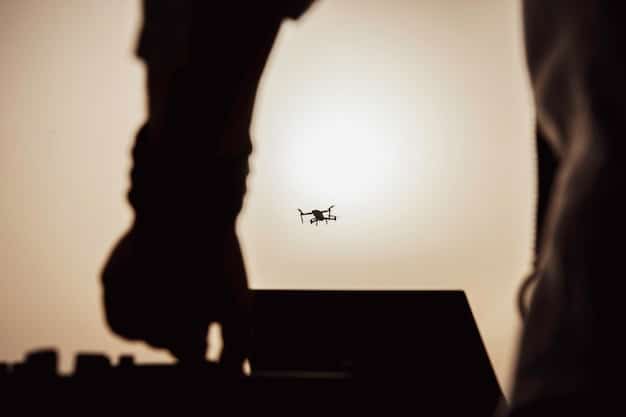
| Aspect | Key Regulation/Detail |
|---|---|
| ✈️ Primary Authority | FAA oversees drone safety and airspace integration. |
| 💼 Commercial Use | Primarily governed by FAA Part 107 rules and Remote Pilot Certificate. |
| 🎮 Recreational Use | Requires registration, TRUST test, adheres to Section 44809. |
| 🌐 Airspace Access | LAANC system for automated airspace authorizations. |
Frequently Asked Questions about US Drone Regulation
▼
The primary regulatory body for all drone operations, both commercial and recreational, in the United States is the Federal Aviation Administration (FAA). The FAA is responsible for ensuring the safety and efficiency of the national airspace, which includes establishing rules and guidelines for unmanned aircraft systems.
▼
FAA Part 107 is the regulation for small unmanned aircraft systems (<55 lbs) used for commercial purposes. Anyone operating a drone for business or compensation needs to obtain a Remote Pilot Certificate by passing an aeronautical knowledge test covering airspace, weather, and operational rules under this regulation.
▼
Yes, all recreational drones weighing 0.55 pounds (250 grams) or more must be registered with the FAA. Additionally, recreational flyers are required to pass “The Recreational UAS Safety Test” (TRUST) to ensure they understand basic safety guidelines and regulations before flying.
▼
No, drones cannot fly anywhere. There are significant restrictions, particularly around airports (controlled airspace), military bases, and other sensitive areas. Systems like LAANC provide automated authorization for flights in controlled airspace, but operators must always check airspace maps and abide by no-fly zones.
▼
While the FAA focuses on airspace safety, privacy concerns related to drones are largely addressed at the state and local levels through laws regarding trespassing, nuisance, and electronic surveillance. The federal government acknowledges these concerns and encourages responsible operation that respects individual privacy without directly regulating it through aviation law.
Conclusion
The US government’s approach to drone regulation is a continuous balancing act, navigating the dynamic interplay between technological innovation, economic opportunity, public safety, national security, and individual privacy. The Federal Aviation Administration remains the central pillar, establishing comprehensive rules for both commercial and recreational use, with Part 107 and the TRUST test serving as foundational elements. Alongside federal efforts, state and local governments contribute to the regulatory tapestry, addressing localized concerns such as privacy and nuisance. As drone technology continues to evolve at a rapid pace, the regulatory landscape will undoubtedly adapt, with ongoing efforts to integrate advanced capabilities like beyond visual line of sight (BVLOS) operations and Unmanned Aircraft System Traffic Management (UTM). This evolving framework demonstrates a commitment to fostering technological advancement while ensuring that the skies remain safe, secure, and accessible for all users.
